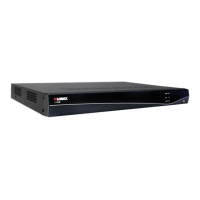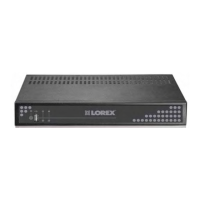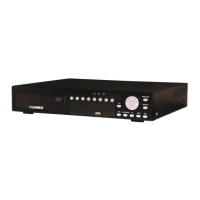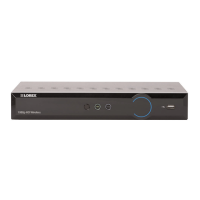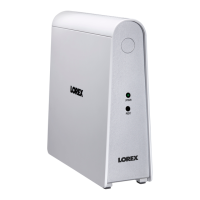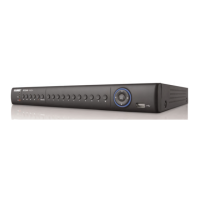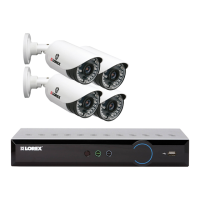164
Appendix C: DDNS Setup (Advanced)
3 Enable DDNS on the NVR.
4 Test the remote connection by connecting to the NVR’s DDNS address.
Step 1 of 4: Port Forwarding
You must port forward the HTTP, Client, and Mobile ports (default: 80, 8000, and 1025) on
your router to your NVR’s IP address before you can remotely connect to your system.
There are several methods to port forward your router:
• Use the Lore
x Easy Connect Auto Port Forwarding Wizard (PC only) to port forward the
required ports (see www.lorextechnology.com for details).
• Manually port forward the required ports on your router to your NVR’s IP address by
foll
owing your router manufacturer’s instructions. For more information on port
forwarding, see the reference guides on www.lorextechnology.com.
NOTE: If the abov
e ports are not forwarded on your router, you will not be able to access your
system remotely.
Step 2 of 4: Create a DDNS Account
Lorex offers a free DDNS service for use with your system. A DDNS account allows you to
set up a web site address that points back to your local network. This allows you to connect
to your system remotely. You must create a DDNS account in the same network as your
NVR.
To setup your free Lorex DDNS account:
1 In your browser, go to http://www
.lorexddns.net and click Step 1.

